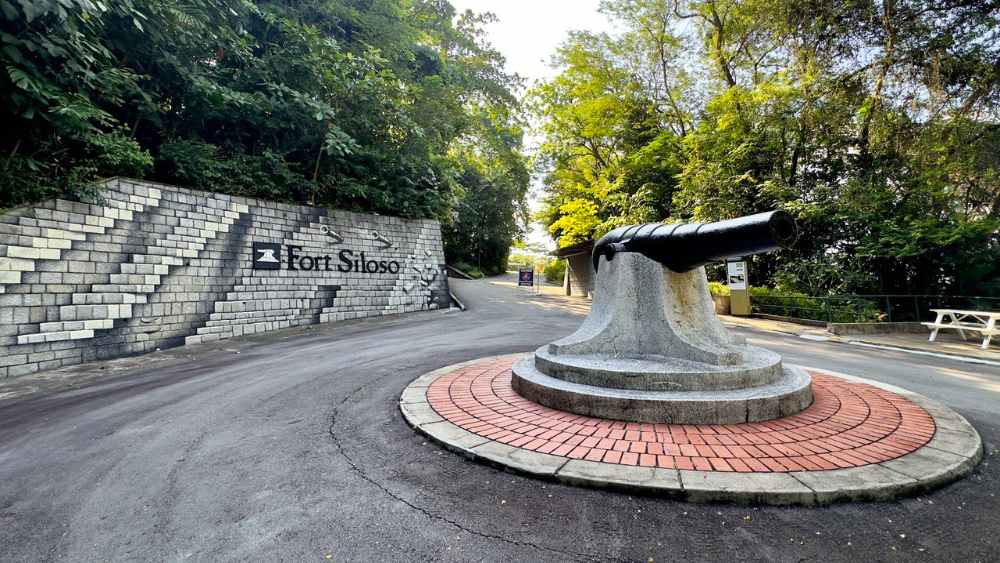National Monuments Of Singapore: Fort Siloso
What is a National Monument? Who gazettes them? How many national monuments are there in Singapore? To date, the Preservation of Sites and Monuments, a division of National Heritage Board, has identified and gazetted 75 buildings, structures and sites of national significance as an integral part of Singapore’s built heritage.
And we're here to tell you all about them - one National Monument at a time!
You've probably passed by or stepped into more than a few of them without realising they were National Monuments: Al-Abrar Mosque, Asian Civilisations Museum, the Civilian War Memorial, Saint Andrew's Cathedral, the Esplanade Park Memorials, Fort Siloso on Sentosa - no need to plan an itinerary for friends visiting from overseas; just show them this article ✌️
In this edition, we focus our attention on the best-preserved fort among Singapore's former wartime fortifications, Fort Siloso.
📍 Location
Fort Siloso was the 74th building to be gazetted as a National Monument. For directions to the location, click here.
📅 Significant dates
Date built:
- 1878: Fort Siloso was built on western end of Pulau Blakang Mati (known today as Sentosa Island)
Milestones:
- 1957: The fort's artillery installations were decommissioned
- 1974: Pulau Blakang Mati was converted into Sentosa Island; the fort was turned into an outdoor war museum after
Date gazetted: 15 Feb 2022
📜 History
Fort Siloso, situated on the western tip of Pulau Blakang Mati (today’s Sentosa Island), is one of the many coastal defences built by the British in the 19th century and is the best-preserved of Singapore’s fortifications. It was constructed on Mount Siloso, but the origin of the name "Siloso" is unclear. Some believe it comes from a “Malayan” term meaning "rock", possibly referring to the rock formations at the western entrance to modern-day Keppel Harbour, while others suggest it stems from the Malay word "selusuh", a type of herb.
Established in 1878, Fort Siloso was one of three forts – the other two were Fort Connaught and Fort Serapong – built to defend New Harbour (later renamed Keppel Harbour) and Singapore’s surrounding waters. It played a key role in the Battle for Singapore and served as a Prisoner-of-War (POW) camp during and after the Japanese Occupation (1942-1945). Fort Siloso is an important historical site, reflecting Singapore’s military and wartime past.
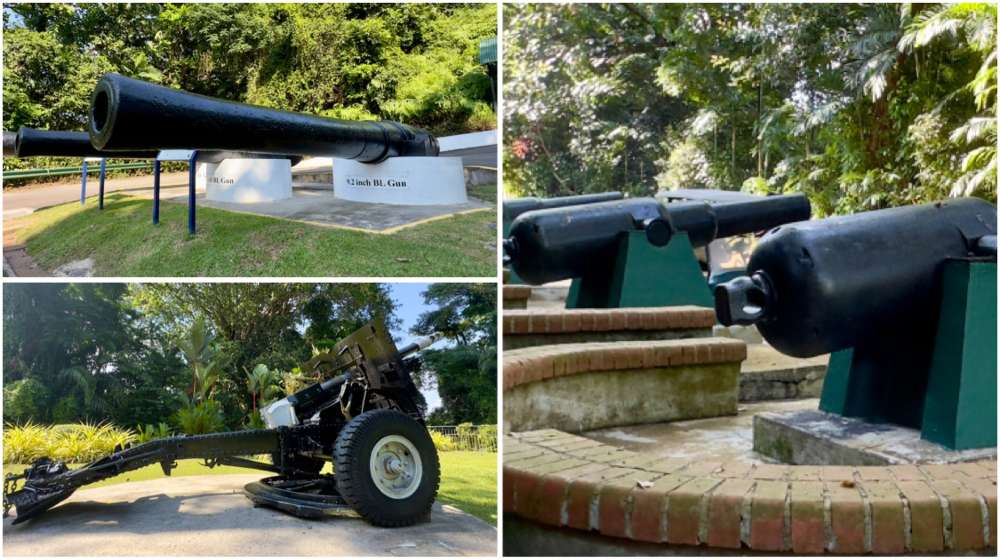 An array of artillery at the fort that will excite any weapons enthusiast. | IMAGES: NG KAI
An array of artillery at the fort that will excite any weapons enthusiast. | IMAGES: NG KAI
Fort Siloso comprises various military installations, including artillery and anti-aircraft positions, machine gun emplacements, searchlights, and command posts.
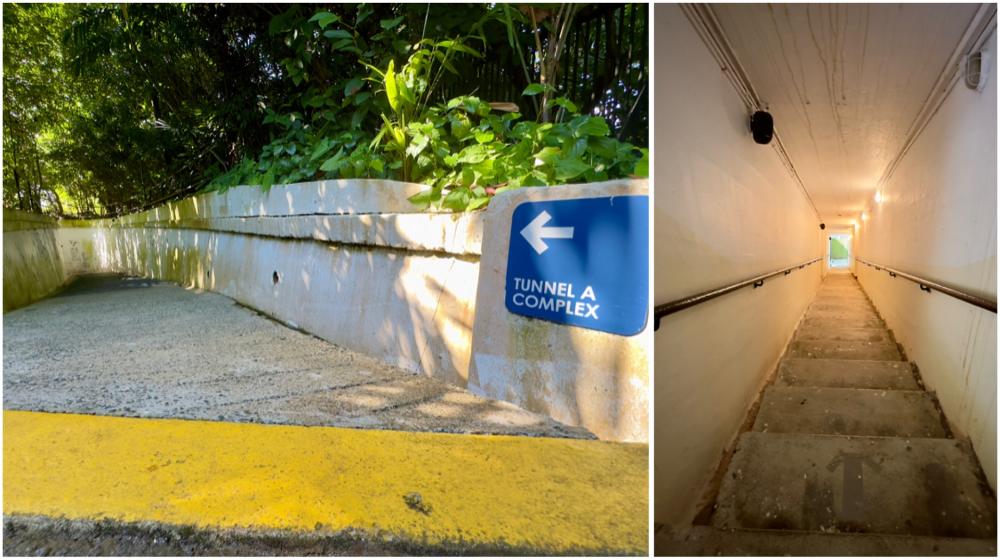 You can enter and explore parts of the three tunnel complexes at Fort Siloso. | IMAGES: NG KAI
You can enter and explore parts of the three tunnel complexes at Fort Siloso. | IMAGES: NG KAI
There is also an intricate underground tunnel network (namely Tunnel Complexes A, B, and C) and casemates (fortified gun emplacements) built into the hillside.
Fort Siloso was part of one of the earliest coordinated coastal defence systems in the world, which included Fort Pasir Panjang, Fort Connaught, and Fort Serapong. Together with Fort Tanjong Katong, these forts were commissioned as part of a large-scale effort to bolster Singapore’s defences, ensuring its security as a strategic trading hub.
Preceding these installations were earlier fortifications like Scandal Point (1819), Fort Fullerton (1830), Fort Canning (1859), Fort Faber (1859), Fort Palmer (1859), and Fort Teregah (1861).
Initially, the fort’s artillery consisted of earthwork batteries housing three 7-inch rifled muzzle-loading guns and two 64-pounder rifled muzzle-loaders. However, these weapons soon became outdated due to the advent of ironclad warships. By the 1890s, more advanced quick-firing and breech-loading guns, capable of firing high-explosive and armour-piercing shells, were installed. These armaments were further upgraded over the years, right up to the start of World War II.
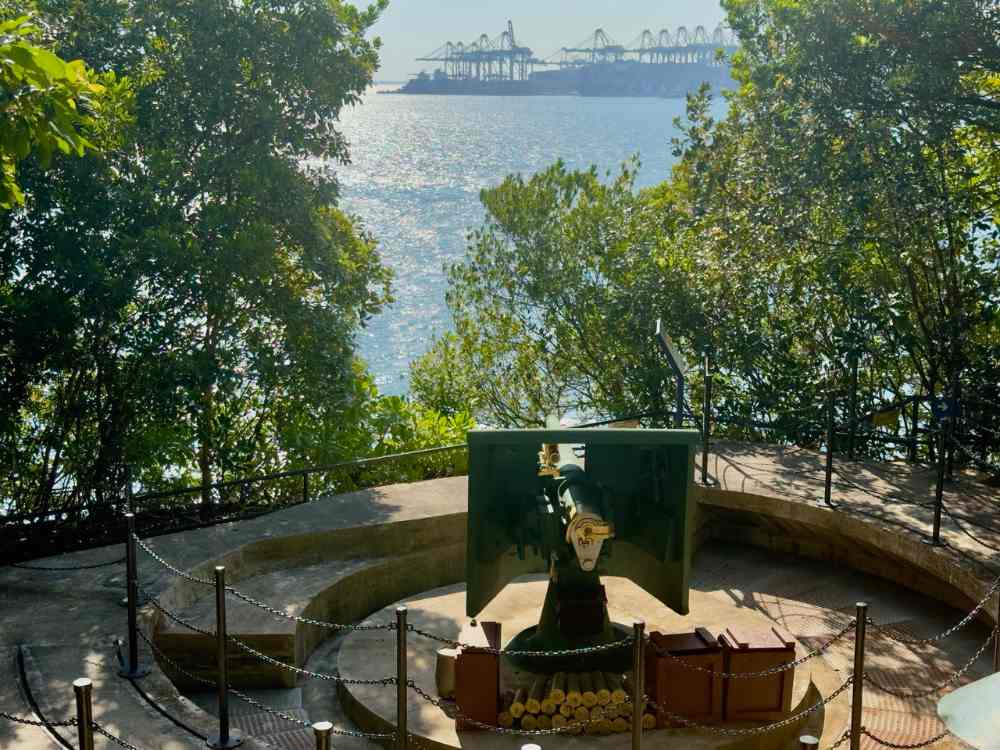 The 12-pounder AMTB gun emplacement, aimed towards Keppel Harbour. | IMAGE: NG KAI
The 12-pounder AMTB gun emplacement, aimed towards Keppel Harbour. | IMAGE: NG KAI
In preparation for war, Fort Siloso underwent significant redevelopment in the 1930s and early 1940s. A 12-pounder quick-firing anti-motor torpedo boat (AMTB) gun emplacement, called OSO Battery, was added to combat small, fast vessels threatening Keppel Harbour.
Additional upgrades included the construction of a three-storey fire director tower, machine gun emplacements, searchlights, and observation posts to monitor the Straits and coordinate artillery fire. Submarine and ground mines were also deployed off the northern coast to protect the area.
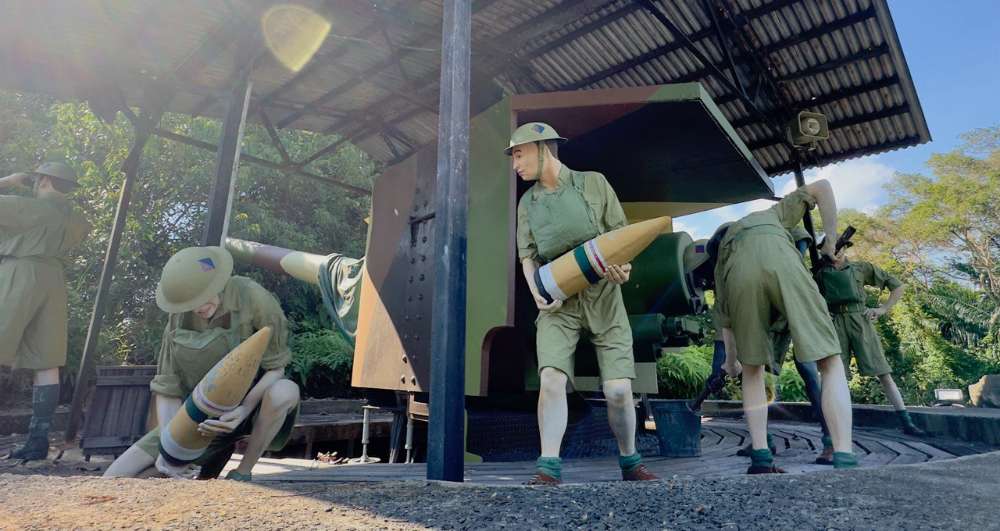 IMAGE: NG KAI
IMAGE: NG KAI
During the Battle for Singapore in 1942 from 8 Feb to 15 Feb, Fort Siloso, along with Fort Connaught, became one of the busiest batteries on Pulau Blakang Mati. Although the fort’s guns were originally intended to defend against sea invasions, they were capable of being turned inland to engage the advancing Japanese forces. Unfortunately, the available ammunition – primarily armour-piercing shells designed for naval targets – was less effective against infantry.
Despite facing heavy bombardment, Fort Siloso’s guns were used to attack Japanese forces near West Coast Road and the Jurong River on 11 Feb 1942. Two days later, the fort, along with Labrador Battery, provided covering fire for the 1st Malay Infantry Brigade, helping them hold off Japanese assaults. Fort Siloso’s guns also destroyed oil refineries on Pulau Bukom and Pulau Sebarok to prevent the Japanese from using them.
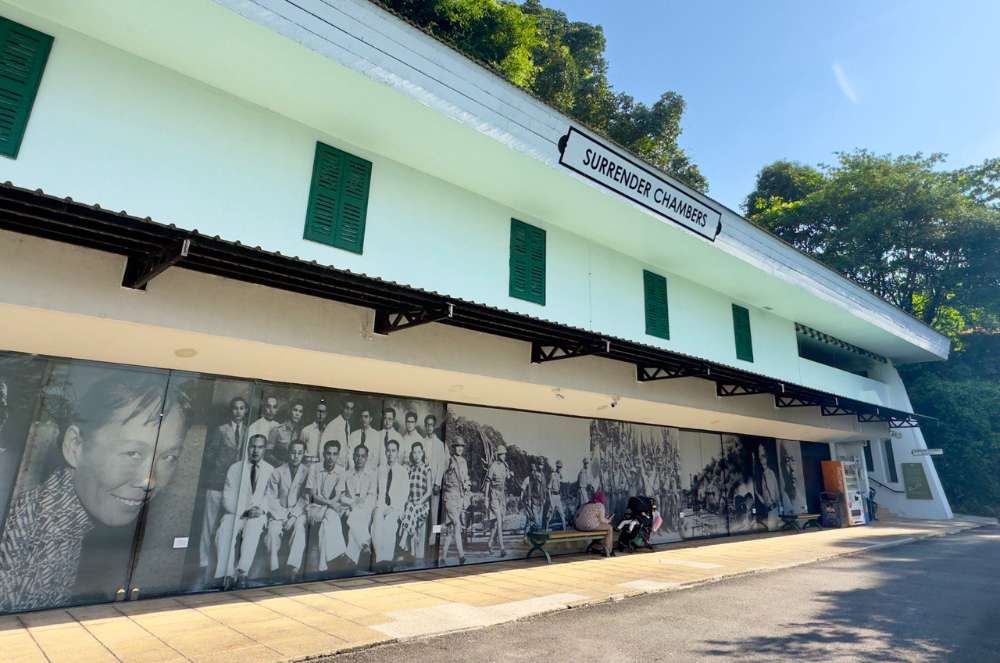 IMAGE: NG KAI
IMAGE: NG KAI
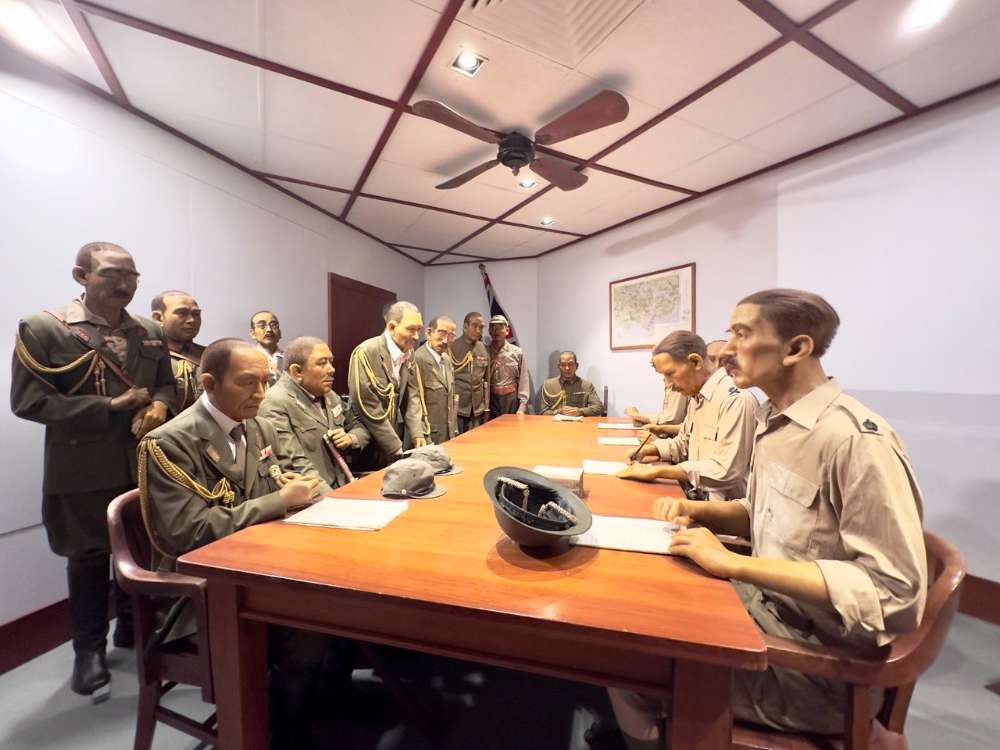 The Surrender Chambers features exhibits such as the British surrender to the Japanese on 15 Feb 1942... | IMAGE: NG KAI
The Surrender Chambers features exhibits such as the British surrender to the Japanese on 15 Feb 1942... | IMAGE: NG KAI
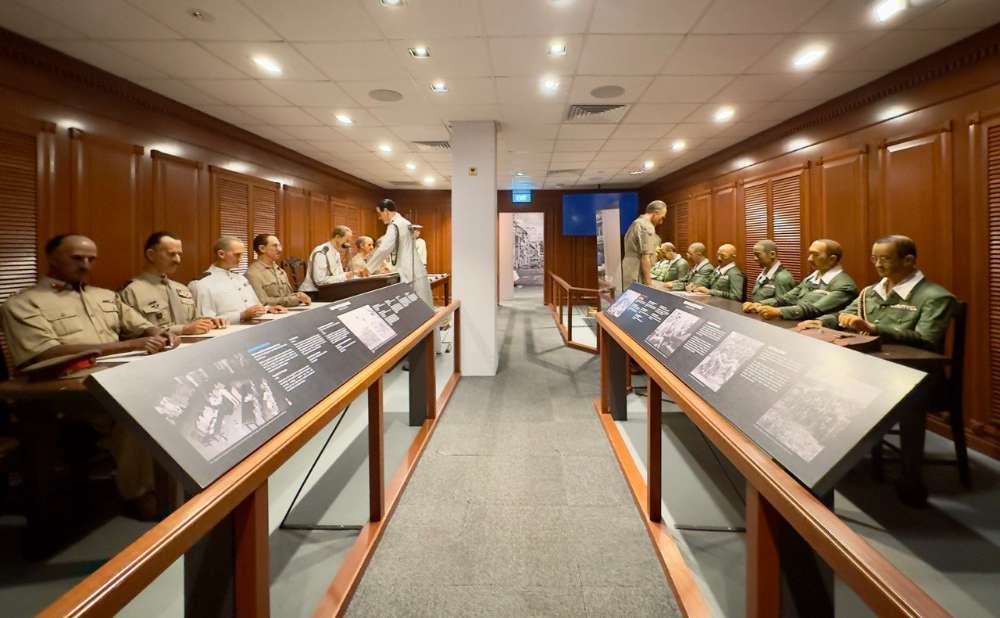 ...as well as the Japanese surrender to the British on 12 Sept 1945. | IMAGE: NG KAI
...as well as the Japanese surrender to the British on 12 Sept 1945. | IMAGE: NG KAI
On the eve of Singapore’s surrender, the British deliberately disabled Fort Siloso’s battery in the wee hours of 14 Feb 1942 to prevent it from falling into enemy hands.
During the Japanese Occupation, Fort Siloso, along with the rest of Pulau Blakang Mati, was used as a POW camp for British and Australian soldiers. After Japan’s surrender in 1945, the British resumed control of the fort, using it to detain Japanese prisoners.
After the Japanese had officially surrendered in 1945 at the Municipal Building (part of today's National Gallery), the Royal Artillery and the 1st Malay Coast Battery took over Fort Siloso. However, the fort's artillery installations were decommissioned in 1957, following the British government’s decision to phase out coastal artillery defences. The fort was later manned by Gurkha detachments.
During the Konfrontasi period (1963-1966), when Indonesia opposed the formation of Malaysia, the 10th Gurkha Rifles Unit stationed at Fort Siloso guarded against potential Indonesian saboteurs attempting to land on Sentosa or raid Keppel Harbour.
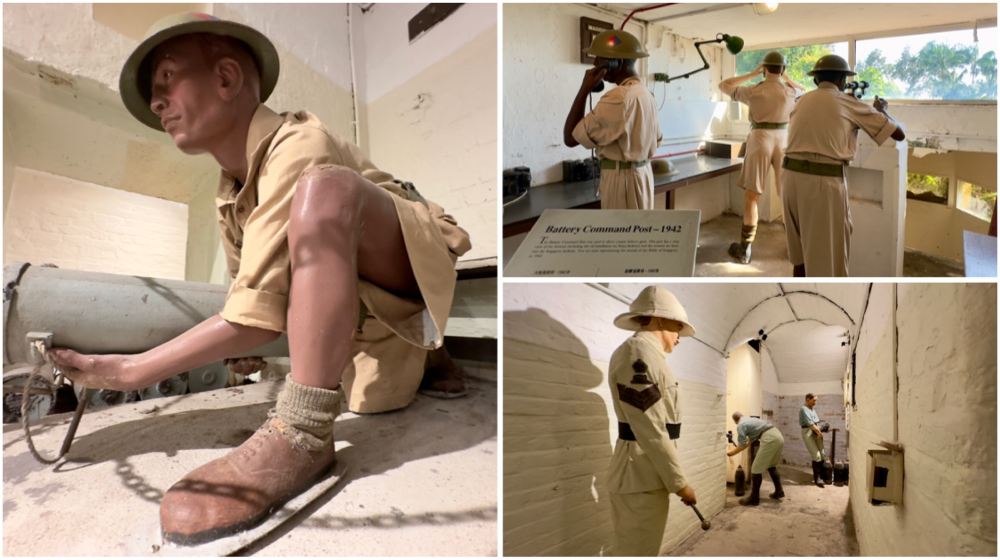 Unnervingly lifelike wax dioramas replicate wartime events. | IMAGE: NG KAI
Unnervingly lifelike wax dioramas replicate wartime events. | IMAGE: NG KAI
Following the withdrawal of British forces from Singapore in 1967, Fort Siloso came under the command of the Singapore Armed Forces. In 1974, after Pulau Blakang Mati was renamed Sentosa and developed as a resort destination, the fort was transformed into an outdoor military museum, featuring an exhibition gallery.
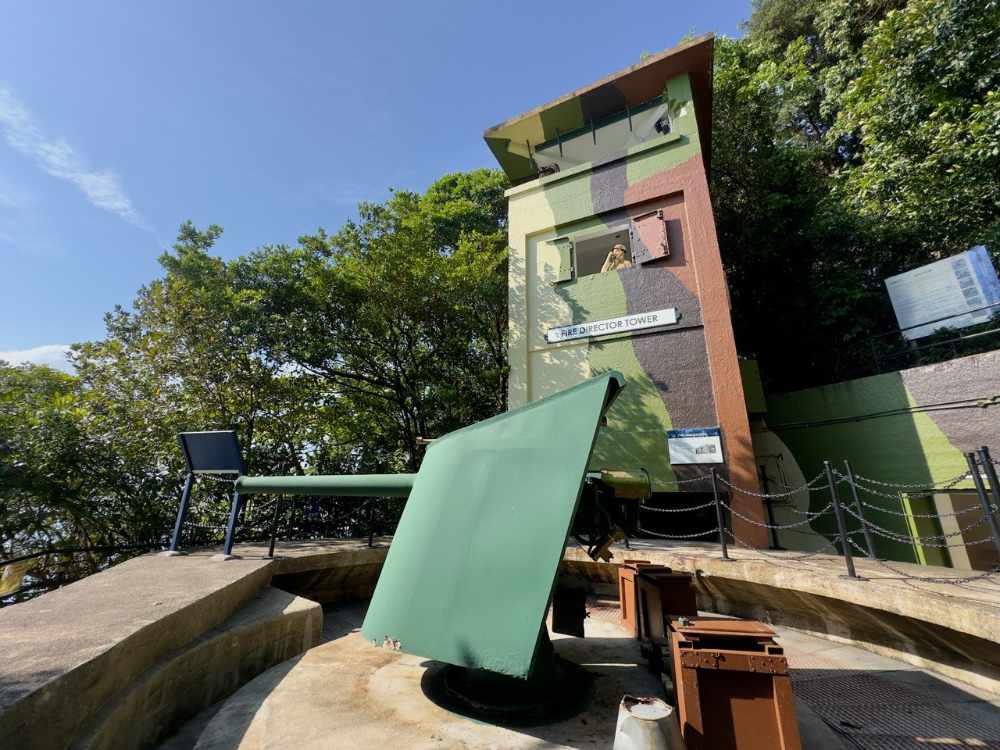 The Fire Director Tower. | IMAGE: NG KAI
The Fire Director Tower. | IMAGE: NG KAI
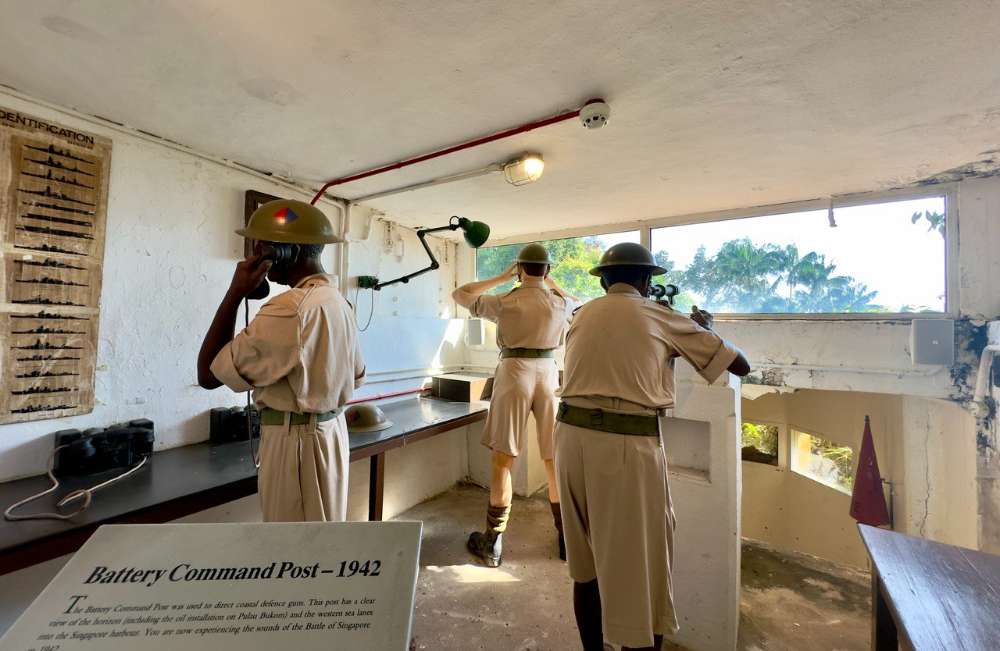 Inside of the Battery Command Post. | IMAGE: NG KAI
Inside of the Battery Command Post. | IMAGE: NG KAI
Today, Fort Siloso comprises 11 key structures preserved within its boundaries. These include original 19th-century casemates, four gun emplacements, three tunnel complexes (which served as underground magazines), the Battery Command Post, the Fire Director Tower, and the former Sergeants’ and Officers’ Messes, offering insight into the lives of soldiers stationed at the fort.
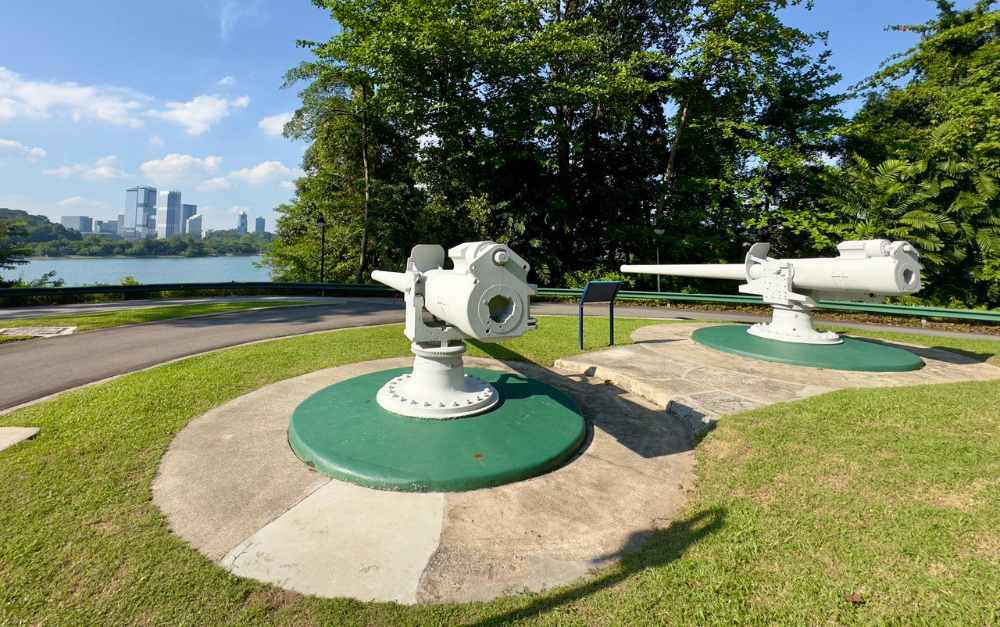 IMAGE: NG KAI
IMAGE: NG KAI
📐 Design and architecture
Colonial Engineer Henry McCallum designed Fort Siloso, making it one of the earliest to use an innovative open artillery battery concept where gun emplacements were positioned outside of traditional fortified structures. This open layout allowed for more flexible gun placements, offering broader arcs of fire and making it difficult for enemies to determine the fort’s exact layout. Additionally, underground features such as casemates and magazines were incorporated near these gun positions.
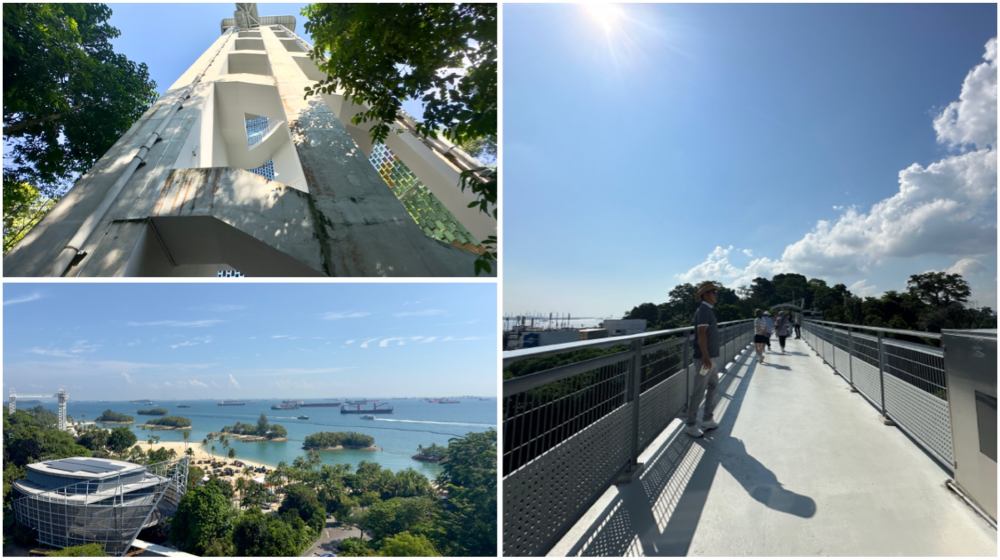 At a height of 43m, and spanning 181m, the Fort Siloso Skywalk offers a stunning view of the area. And yes, there are two lifts available if you do not wish to or cannot take the stairs. | IMAGES: NG KAI
At a height of 43m, and spanning 181m, the Fort Siloso Skywalk offers a stunning view of the area. And yes, there are two lifts available if you do not wish to or cannot take the stairs. | IMAGES: NG KAI
🕖 Opening hours
Regular visiting hours of the various sites at Fort Siloso daily:
- Fort Siloso & Surrender Chambers: 9am to 6pm
- Exhibits open from 10am to 6pm; last admission at 5.30pm
- Fort Siloso Skywalk lift operates from 9am to 10pm
Find out more here.
🎟️ Admission
Entry is free. (Excluding the entry fee to Sentosa.)
For the latest updates on Wonderwall.sg, be sure to follow us on TikTok, Telegram, Instagram, and Facebook. If you have a story idea for us, email us at [email protected].







